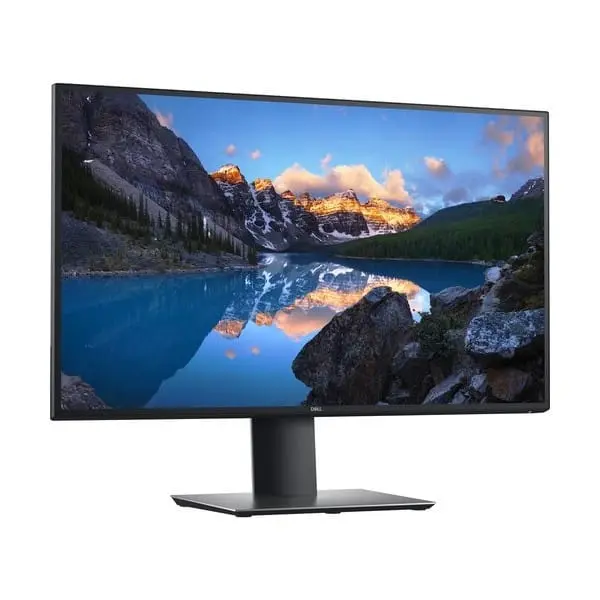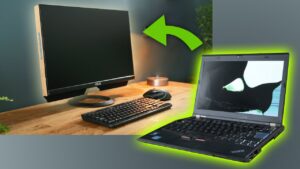Because of the abrupt move to remote working in 2020, millions of individuals now rely on a laptop to keep busy from home. This has frequently entailed surrendering many office displays for just one, as well as foregoing a specialized keyboard and mouse arrangement. While the latter two may still be linked to a laptop, the lost screen real estate can have a significant impact on productivity. However, with a few easy steps, you can turn your laptop into a desktop PC. It won’t be exactly like the actual thing, but it might considerably enhance remote working.
You will need a decent monitor and accessories, but we believe it is a cost worth paying if you want to work remotely in the coming months.
What will you see here?
Make sure your laptop is up to the task
Before you do anything else, ensure sure your current laptop is capable of connecting to an external monitor, keyboard, mouse, and any other peripherals you may require.
The good news is that the hardware is relatively low – even systems over a decade old should be capable. In general, any modern Intel Core or AMD Ryzen CPU would suffice.
You may have issues if your laptop has a less powerful CPU, such as one from Intel’s Pentium or Celeron lines, but only if you intend to use both the laptop and an external monitor display at the same time. That takes us perfectly to the next point to think about.
Do you plan on using the laptop itself?
This improvised desktop configuration is dependent on attaching your laptop to an external display. You must thus determine whether the laptop will just be used to power the bigger screen or whether it will continue to serve as a secondary screen.
As previously said, the latter will need a bit more power, but it will also influence how you organize your workspace. In this case, a standard laptop stand may be quite helpful in raising the computer to a more natural posture and preventing neck strain.
Consider a vertical stand if you merely want the laptop to remain connected to the display and out of the way. These may be quite handy for reducing space and allowing you to concentrate on the external display. Many excellent examples of both may be found in our roundup of the finest laptop stands.
Get a suitable monitor

The monitor is the most crucial component of this desktop-like configuration, so get it right. Our best monitor chart has several excellent possibilities, but whichever model you select must be suitable for the laptop you already possess.
The main constraint is likely to port; as laptops’ weight and profile have decreased in recent years, not only has their variety of built-in connectors. Here are the most common ones for connecting to a display adapter:
- HDMI is one of the most popular methods of connecting to an external display. Many current laptops lack this port by design, however, it may be used with an adaptor.
- DisplayPort – A smaller, more squared connection that is thought to be a more contemporary alternative to HDMI. It can frequently deliver video at greater resolutions and refresh rates than HDMI.
- Mini DisplayPort – A smaller variant of the above that supports 4K video at 60 frames per second.
- DVI-D is more commonly seen on low-cost and mid-range devices. To connect your monitor to a laptop if it just has a DVI-D connector, you’ll need an adaptor.
- VGA was quite popular on early PCs and had a distinct style. VGA should be used only when no other display connectors are available.
This way you can turn your laptop into a desktop PC. After you’ve resolved the port issue, you should think about the reliability of the external monitor you’re utilizing. As a general guideline, try for a display with the same resolution as your laptop to minimize any performance effect. Even if your laptop’s real resolution is significantly lower, we’d still recommend 1080p. If your laptop has a current Intel Core or AMD Ryzen CPU, or perhaps a discrete GPU, 1440p or 4K panels are worth considering.
Choose an appropriate keyboard and mouse
When you want to turn your laptop into a desktop PC. A superb desktop setup includes much more than just the monitor. At the absolute least, it’s worth investing in a good keyboard and mouse to go with it. These can connect to the laptop either physically or wirelessly.
Get everything up and running
Before you begin, you must ensure that everything is correctly connected. Don’t test out your setup until all of the components are in place.
When it’s finished, switch on your laptop, making sure your display is also turned on. The majority of PCs will change to utilize the external display automatically, but only once you’ve logged in to your account.
It’s worth waiting a few minutes if you don’t notice anything. After that, double-check the wires to ensure they’re all connected. If you’re still experiencing trouble, go to Settings > System and make sure the ‘Display’ option is selected in the left pane. Scroll down to the sub-heading ‘Multiple displays’ and click ‘Detect.’
Conclusion
Laptops bring the power of a PC with them everywhere they go, from the other side of the nation to the other side of the sofa. However, there are occasions when you need a desktop for a larger monitor, a bigger keyboard, and a muscular mouse. And you need to turn your laptop into a desktop PC.
















